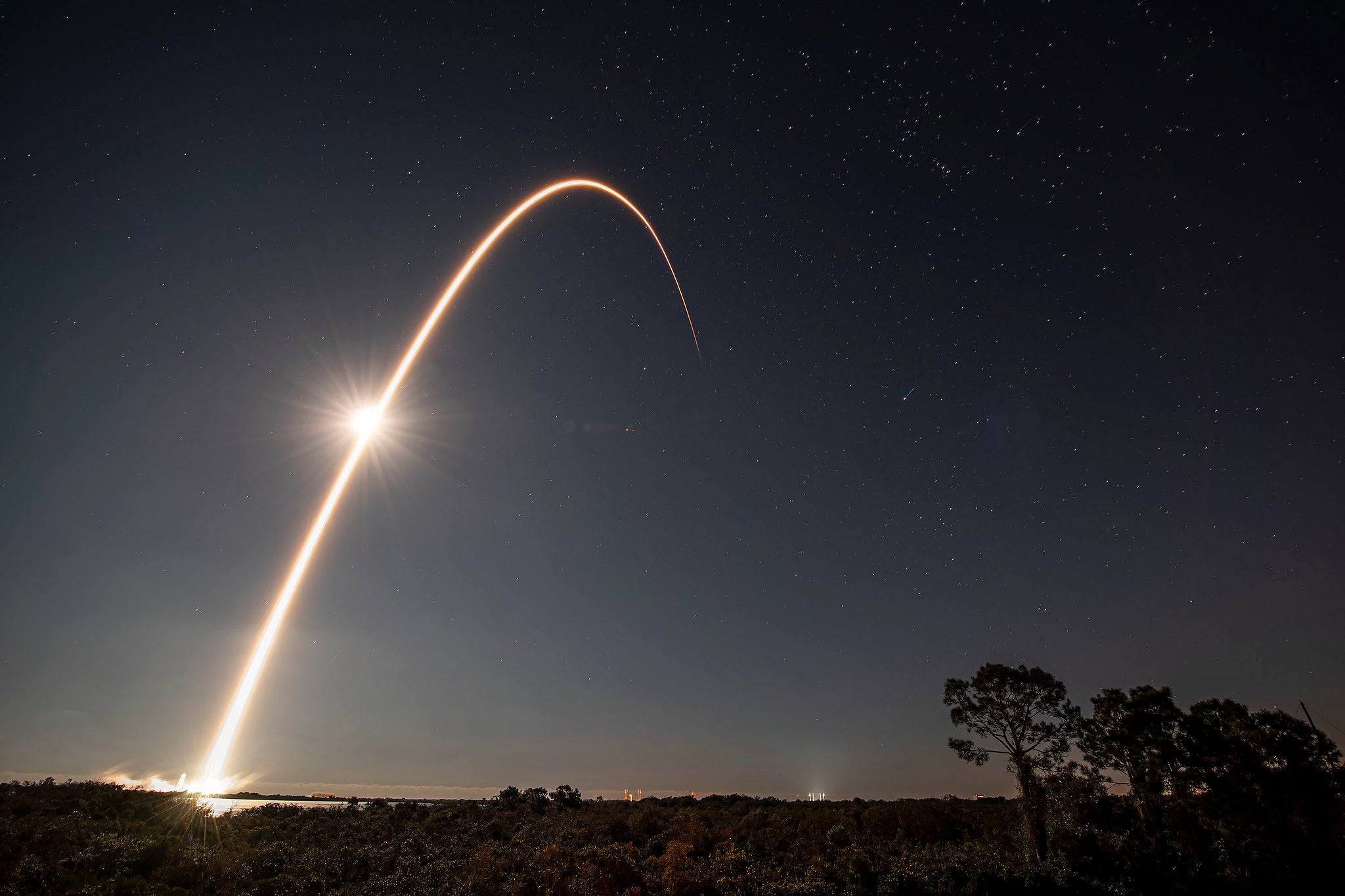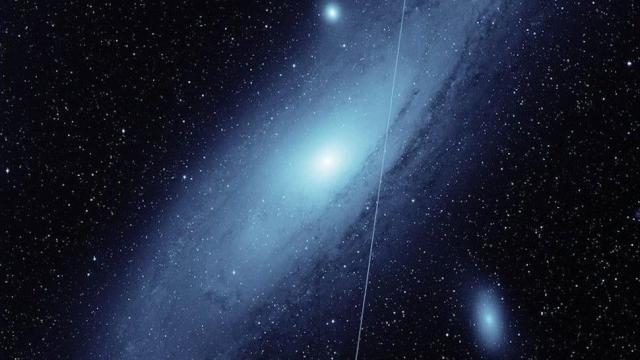Researchers at the Zwicky Transient Facility in California have analysed the degree to which SpaceX’s Starlink satellite constellation is affecting ground-based astronomical observations. The results are mixed.
The new paper, published in The Astrophysical Journal Letters and led by former Caltech postdoctoral scholar Przemek Mróz, offers some good news and some bad news. The good news is that Starlink is not currently causing problems for scientists at the Zwicky Transient Facility (ZTF), which operates out of Caltech’s Palomar Observatory near San Diego. ZTF, using both optical and infrared wavelengths, scans the entire night sky once every two days in an effort to detect sudden changes in space, such as previously unseen asteroids and comets, stars that suddenly go dim, or colliding neutron stars.
But that doesn’t mean Starlink satellites, which provide broadband internet from low Earth orbit, aren’t having an impact. The newly completed study, which reviewed archival data from November 2019 to September 2021, found 5,301 satellite streaks directly attributable to Starlink. Not surprisingly, “the number of affected images is increasing with time as SpaceX deploys more satellites,” but, so far, science operations at ZTF “have not yet been severely affected by satellite streaks, despite the increase in their number observed during the analysed period,” the astronomers write in their study.
The bad news has to do with the future situation and how satellite megaconstellations, whether Starlink or some other fleet, will affect astronomical observations in the years to come, particularly observations made during the twilight hours. Indeed, images most affected by Starlink were those taken at dawn or dusk. In 2019, this meant satellite streaks in less than 0.5% of all twilight images, but by August 2019 this had escalated to 18%. Starlink satellites orbit at a low altitude of around 550 km, causing them to reflect more sunlight during sunset and sunrise, which creates a problem for observatories at twilight.
Astronomers perform observations at dawn and dusk when searching for near-Earth asteroids that might appear next to the Sun from our perspective. Two years ago, ZTF astronomers used this technique to detect 2020 AV2 — the first asteroid entirely within the orbit of Venus. A concern expressed in the new paper is that, when Starlink gets to 10,000 satellites — which SpaceX expects to achieve by 2027 — all ZTF images taken during twilight will contain at least one satellite streak. Following yesterday’s launch of a Falcon 9 rocket, the Starlink megaconstellation consists of over 2,000 satellites.
In a Caltech press release, Mróz, now at the University of Warsaw in Poland, said he doesn’t “expect Starlink satellites to affect non-twilight images, but if the satellite constellation of other companies goes into higher orbits, this could cause problems for non-twilight observations.” A pending satellite constellation managed by OneWeb, a UK-based telecommunications firm, will orbit at an operational altitude of 1,200 km, for example.

The researchers also estimated the fraction of pixels that are lost as a result of a single satellite streak, finding it to be “not large.” By “not large” they mean 0.1% of all pixels in a single ZTF image.
That said, “simply counting pixels affected by satellite streaks does not capture the entirety of the problem, for example resources that are required to identify satellite streaks and mask them out or the chance of missing a first detection of an object,” the scientists write. Indeed, as Thomas Prince, an astronomer at Caltech and a co-author of the study pointed out in the press release, a “small chance” exists that “we would miss an asteroid or another event hidden behind a satellite streak, but compared to the impact of weather, such as a cloudy sky, these are rather small effects for ZTF.”
SpaceX has not responded to our request for comment.
The scientists also looked into the measures taken by SpaceX to reduce the brightness of Starlink satellites. Implemented in 2020, these measures include visors that prevent sunlight from illuminating too much of the satellite’s surface. These measures have served to reduce the brightness of Starlink satellites by a factor of 4.6, which means they’re now at a 6.8 magnitude (for reference, the brightest stars shine at a magnitude 1, and human eyes can’t see objects much dimmer than 6.0). This marks a major improvement, but it’s still not great, as members of the 2020 Satellite Constellations 1 workshop asked that satellites in LEO have magnitudes above 7.
The current study only considered the impacts of Starlink on the Zwicky Transient Facility. Every observatory will be affected differently by Starlink and other satellites, including the upcoming Vera C. Rubin Observatory, which is expected to be badly affected by megaconstellations. Observatories are also expected to experience problems as a result of radio interference, the appearance of ghost-like artifacts, among other potential issues.
